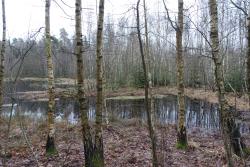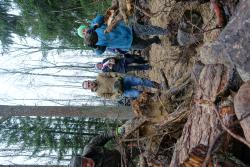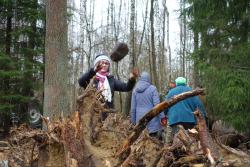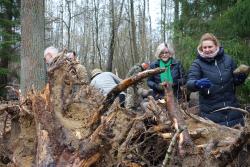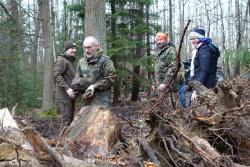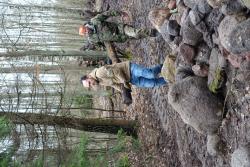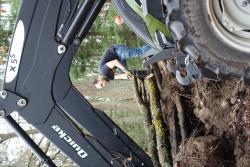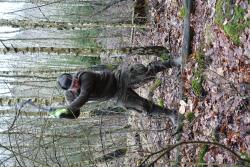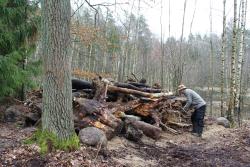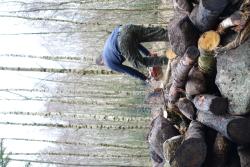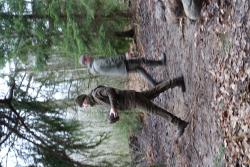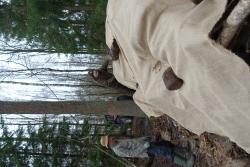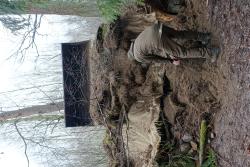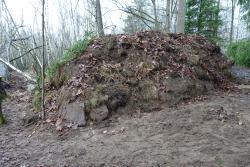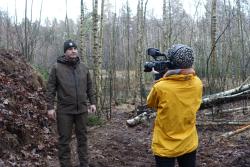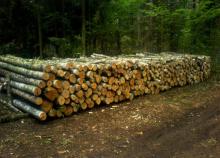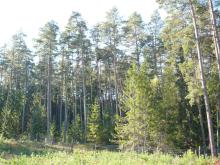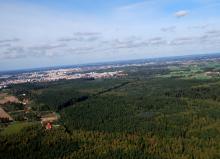 Asset Publisher
Asset Publisher
Polish forests
Poland is in the European lead, while concerning the area of all forests. They cover about 29,2 % of the country territory, and grow within the area of 9,1 million hectares. The overwhelming majority of the forests is state owned, of which almost 7,6 million hectares are managed by the State Forests National Forest Holding..
The number of Polish forest is still growing. The forestation rate of the country has increased from 21 % in 1945 to 29,2 % at the moment. Between 1995 and 2008, the forest area increased by 310 thousand ha. The basis for afforestation works is the "National Programme for Increasing the Forest Cover" (KPZL), assuming an increase of the forestation rate up to 30 % by 2020 and up to 33 % by 2050. Polish forests abound in flora, fauna and fungi. 65 % of the total number of animal species live there.
The forests grow in our country on poor soils, mainly because of the development of the agriculture in previous years. It influences the distribution of the types of the forest sites in Poland. Over 55 % of the forest areas is covered with coniferous forests. In other areas, there are forest sites, mainly the mixed ones. Their small part constitute alder and riparian forests – not more than 3 %.
In the years 1945 – 2011 the area of natural deciduous tree stands within the area of the State Forests National Forest Holding increased from 13 to 28,2 %.
Within the lowlands and uplands the most often occurring tee species is pine. It covers 64,3 % of the forest area of the State Forests National Forest Holding and 57,7 % of private and commune forests. In the mountains the predominant species is European spruce ( in the west) and European spruce with beech (in the east). Domination of pine is the result of carrying on sustainable forest management in the past. Once, the monocultures (crops or cultivations of one species) were the answer to the great demand of industry for wood. Such forests appeared to be quite fragile to climatic factors. They also were often the prey of pests' expansion.
In Polish forests, the share of other tree species, especially deciduous trees have been systematically increasing. The foresters have stepped aside from monocultures – that is why, they try to fit specific species of the forest stand to the natural stand, that would be proper for the given area. Thanks to that, in the years 1945 – 2011, the area of the deciduous tree stands within the lands of the State Forests National Forest Holding increased from 13 to 28,2 %. There occur more and more frequently the following tree species: oaks, ashes, maples, sycamore maples, elms, but also birches, beeches, alders, poplars, hornbeams, aspens, tilias and willows.
Our forests are the most often represented by the forest stands aged 40 to 80 years. The average age of the forest equals 60 years. More and more trees are of big size at the age over 80 years. Since the end of the Second World War, the forests' area has increased up to almost 1,85 million hectares.
Raport o stanie lasów w Polsce 2012
 Asset Publisher
Asset Publisher
Akcja budowy zimowego schronienia dla płazów
Akcja budowy zimowego schronienia dla płazów
Akcja budowy zimowego schronienia dla płazów w Nadleśnictwie Olsztyn
Wspólnymi siłami pracowników Nadleśnictwa Olsztyn, Fundacji Nexus, Fundacji Warneland, Fundacji Polish Preppers, Stowarzyszenia Nasze Jakubowo, Studia Ruchome Obrazki oraz Klubu Sportowego Warmia Active powstało dziś w Leśnictwie Zazdrość hibernakulum dla płazów.
Co to jest to tajemnicze hibernakulum?
To nic innego jak zimowa kryjówka dla płazów, czyli zimowisko. Płazy to zwierzęta zmiennocieplne, które dostosowują temperaturę swego ciała do otoczenia. Dlatego w zimie przechodzą w stan odrętwienia, czyli hibernacji. Jako miejsca zimowania wykorzystują przede wszystkim naturalne zagłębienia, norki, wykroty, sterty gałęzi i przestrzenie między korzeniami drzew, które, osłonięte dodatkowo roślinnością i opadłymi liśćmi, zapewniają im ochronę.
Skąd pomysł na taką inicjatywę?
W ostatnich latach daje się wyraźnie zaobserwować spadek liczebności płazów. Przyczyn jest wiele, m.in. zmiany środowiska spowodowane przez człowieka, a zwłaszcza niszczenie i likwidacja zbiorników wodnych (które stanowią ich miejsca rozrodu), zanieczyszczenie wód oraz ruch samochodowy.
Bywa jednak i tak, że nawet wybrane przez płazy zimowisko, może się okazać dla nich śmiertelną pułapką. Dzieje się tak na przykład wtedy, gdy płazy nie mogą się wydostać z kryjówki, do której weszły jeszcze jesienią. Płazy wpadają czasem do obiektów odwodnieniowych — studzienek i kolektorów kanalizacyjnych, różnorodnych konstrukcji o stromych ścianach, w tym na przykład zbiorników wodnych o stromych lub nawet pionowych brzegach, niezabezpieczonych wykopów, umocnionych betonem rowów, osadników, studni czy basenów. Dlatego z inicjatywy Fundacji Nexus postanowiliśmy stworzyć płazom bezpieczne schronienia na zimowy czas.
Gdzie powstało hibernakulum?
Zimowisko zostało utworzone blisko zbiornika wodnego w Leśnictwie Zazdrość, żeby jak najbardziej ułatwić płazom dostęp do tego schronienia.
Jak zbudować hibernakulum?
Zasadniczą cześć zimowiska stanowi pryzma zbudowana z naturalnych materiałów posadowiona w niezbyt głębokim wykopie (lub w istniejącym naturalnym zagłębieniu). Poszczególne warstwy stanowią (od dołu): żwir, kamienie, pnie, konary i gałęzie, tkanina jutowa lub inna z naturalnego materiału, liście, drobne gałęzie, ziemia z wykopu i na koniec opcjonalnie warstwa roślinności.
Im większe hibernakulum, tym lepiej – w większym zimowisku będą panować stabilniejsze warunki. Ścianki powinny być łagodne, aby umożliwić płazom wejście i wyjście z kryjówki. Nie należy upychać poszczególnych elementów zbyt gęsto, płazy powinny mieć swobodny dostęp do zimowiska, szczególnie od strony zbiornika wodnego, ale przestrzenie w zimowisku nie powinny być większe niż ok. 10 cm średnicy, wtedy zimowisko nie ulegnie wychłodzeniu.
Przypomnijmy, że wszystkie gatunki herpetofauny, czyli płazów i gadów, są w Polsce pod ochroną!


 fot. Paweł Fabijański
fot. Paweł Fabijański
 fot. Paweł Fabijański
fot. Paweł Fabijański
 fot. Paweł Fabijański
fot. Paweł Fabijański

